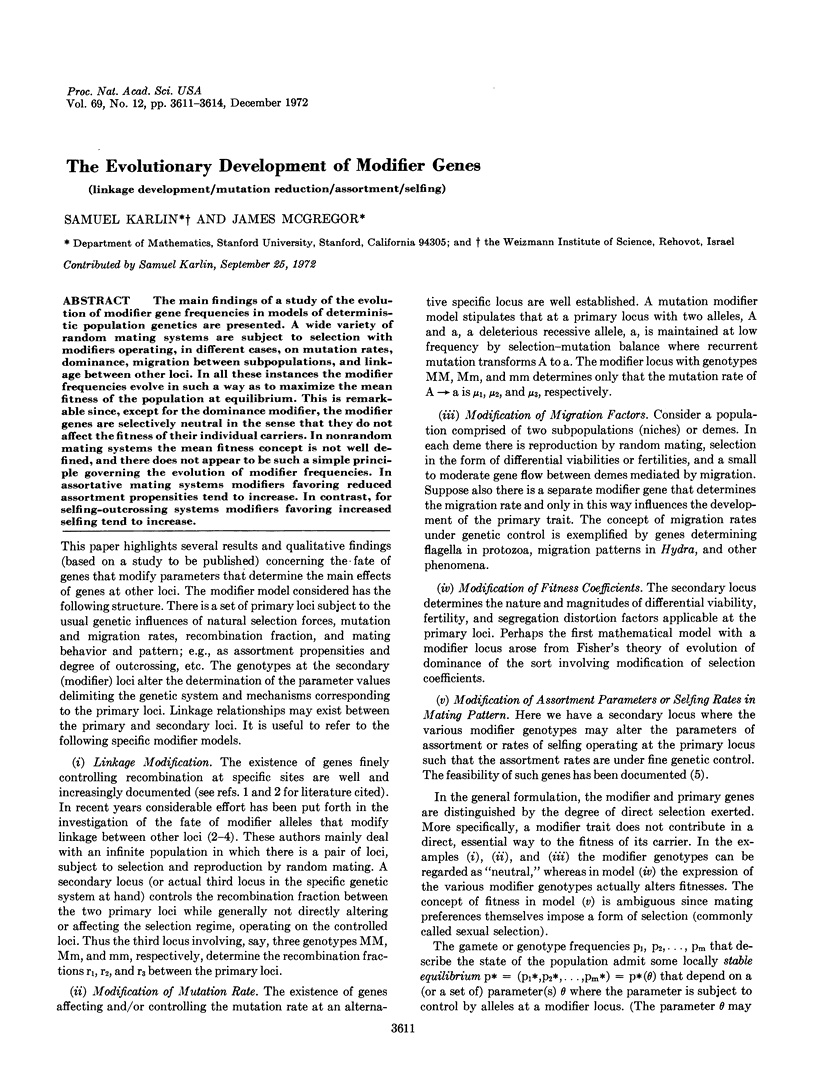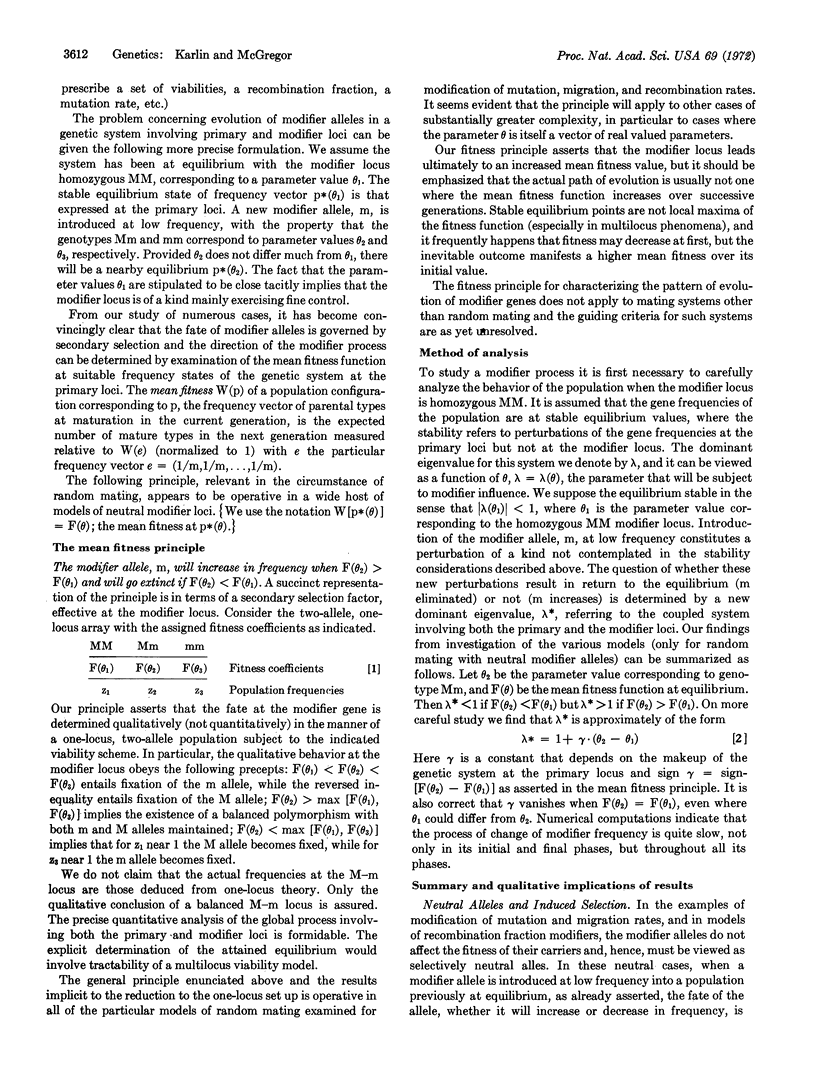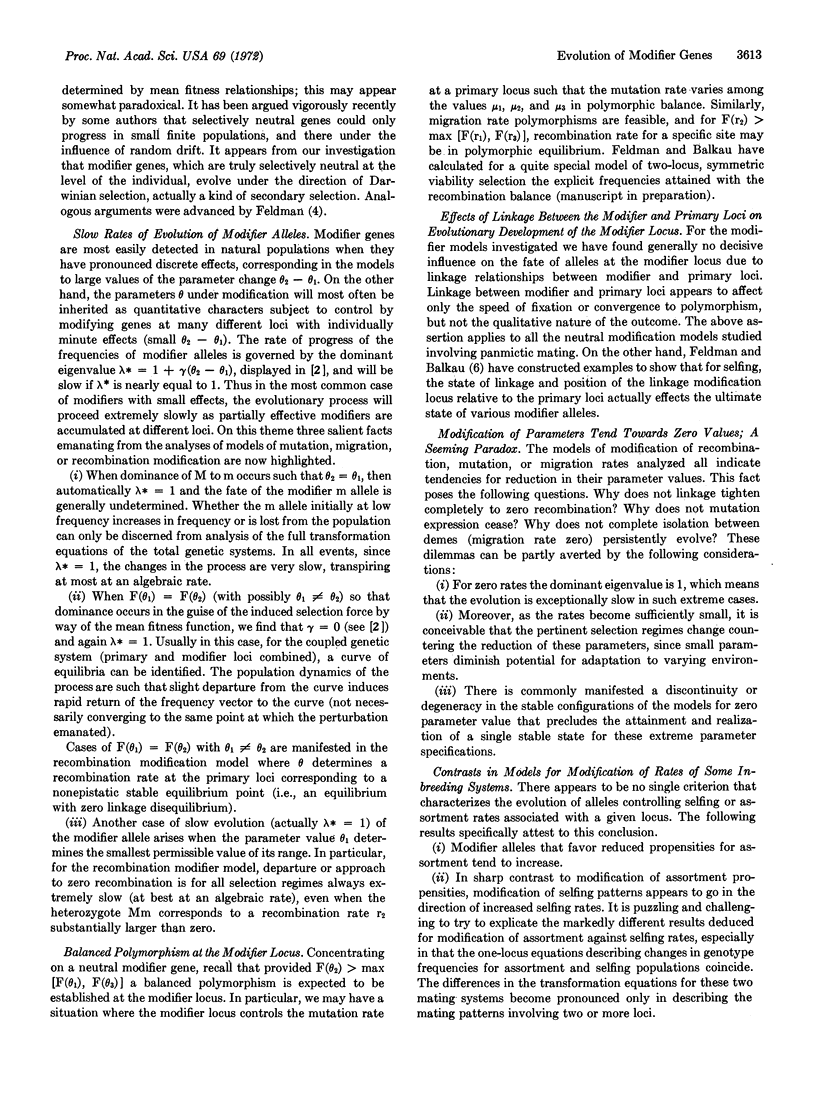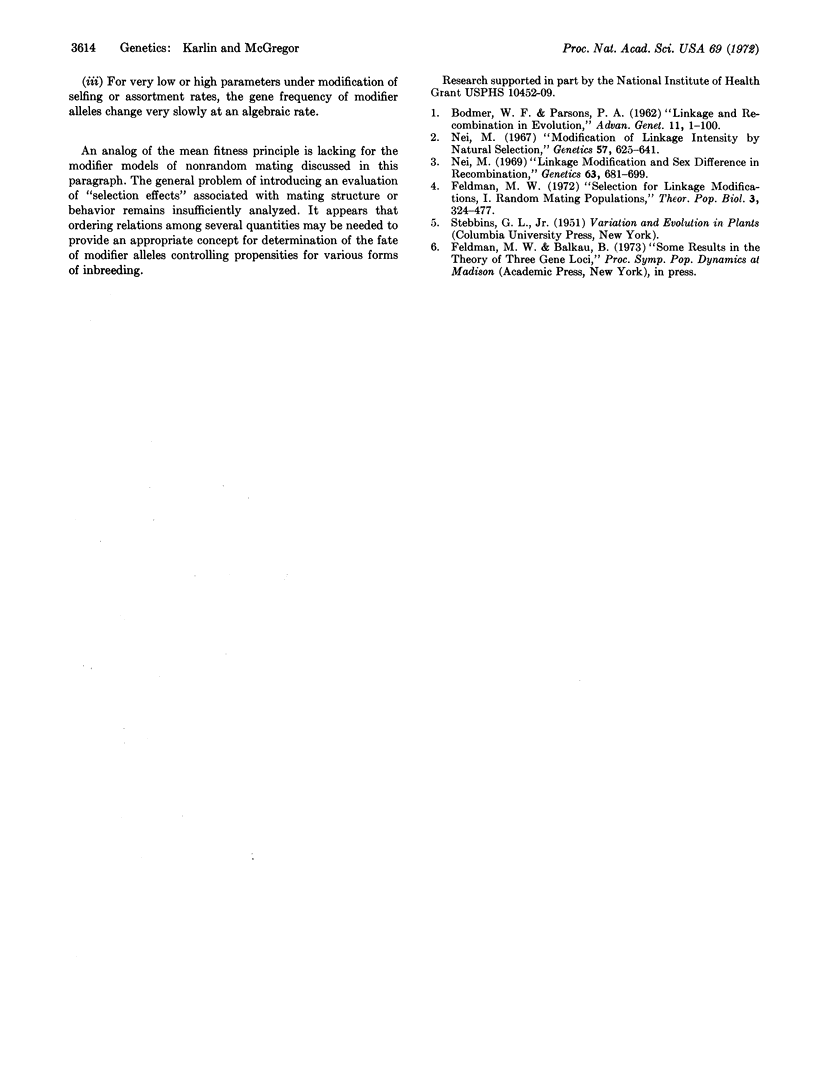Abstract
The main findings of a study of the evolution of modifier gene frequencies in models of deterministic population genetics are presented. A wide variety of random mating systems are subject to selection with modifiers operating, in different cases, on mutation rates, dominance, migration between subpopulations, and linkage between other loci. In all these instances the modifier frequencies evolve in such a way as to maximize the mean fitness of the population at equilibrium. This is remarkable since, except for the dominance modifier, the modifier genes are selectively neutral in the sense that they do not affect the fitness of their individual carriers. In nonrandom mating systems the mean fitness concept is not well defined, and there does not appear to be such a simple principle governing the evolution of modifier frequencies. In assortative mating systems modifiers favoring reduced assortment propensities tend to increase. In contrast, for selfing-outcrossing systems modifiers favoring increased selfing tend to increase.
Keywords: linkage development, mutation reduction, assortment, selfing
Full text
PDF



Selected References
These references are in PubMed. This may not be the complete list of references from this article.
- Feldman M. W. Selection for linkage modification. I. Random mating populations. Theor Popul Biol. 1972 Sep;3(3):324–346. doi: 10.1016/0040-5809(72)90007-x. [DOI] [PubMed] [Google Scholar]
- Nei M. Linkage modifications and sex difference in recombination. Genetics. 1969 Nov;63(3):681–699. doi: 10.1093/genetics/63.3.681. [DOI] [PMC free article] [PubMed] [Google Scholar]
- Nei M. Modification of linkage intensity by natural selection. Genetics. 1967 Nov;57(3):625–641. doi: 10.1093/genetics/57.3.625. [DOI] [PMC free article] [PubMed] [Google Scholar]


